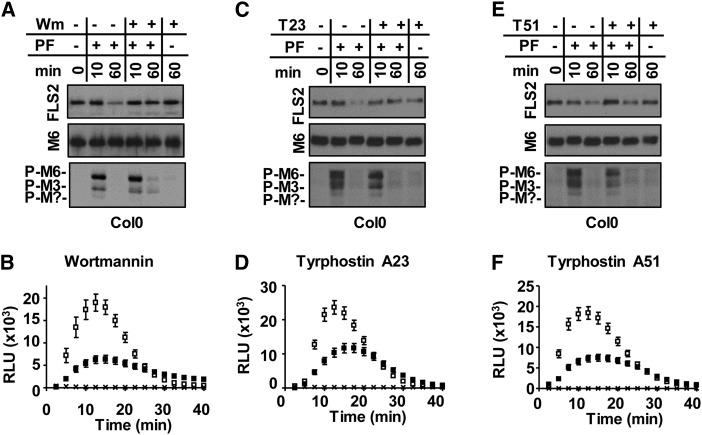Figure 4.
Effects of chemical inhibitors on ligand-induced degradation of FLS2 and flg22 signaling. A and B, Pretreatment with 30 µm Wm. C and D, Pretreatment with 100 µm TyrA23. E and F, Pretreatment with 100 µm TyrA51. For immunoblot analyses (A, C, and E), Col-0 leaf strips were treated with (+) or without (–) chemical inhibitors and elicited with (+) or without (–) 1 µm flg22 for indicated times in minutes. Total protein extracts were probed with αFLS2, αP-p44/42 MAPK to assess FLS2 protein degradation, or flg22-induced phosphorylation of MPK6 (P-M6), MPK3 (P-M3), and an unknown MPK (P-M?). Individual MAPKs were identified by apparent mass. Immunoblots probed with αMPK6 (M6) confirmed MPK6 accumulation and served as loading control. For flg22-induced ROS production (B, D, and F), Col-0 leaf disc halves were treated in the presence (black squares) or absence (white squares) of chemical inhibitors and elicited with 1 µm flg22 at 0 min (n = 24 per treatment). Mock treated samples (x) were pretreated with either inhibitor and treated with DMSO instead of flg22 at 0 min (n = 24 per treatment). To allow for correct comparisons, ROS experiments shown in the same section were performed in the same 96-well plate at the same time. Values are mean ± se. Each experiment was done at least three times with similar results. T23, TyrA23; T51, TyrA51; RLU, relative light units.

